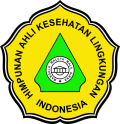RESISTENSI NYAMUK Aedes aegypti TERHADAP CYPERMETHRIN DI KABUPATEN KLATEN, JAWA TENGAH
DOI:
https://doi.org/10.26630/rj.v15i1.2608Keywords:
Aedes aegypti, bioassay-test, cypermethrin, DHF, resistanceAbstract
Dengue Hemorrhagic Fever (DHF) is still a global health problem. The Aedes aegypti mosquito transmits DHF, so vector control is an effective strategy in disease prevention. One of the insecticides that have long been used in the Klaten Regency is cypermethrin. However, cases of DHF have been reported to have fluctuated over the past ten years. This study aims to determine the resistance of Ae.aegypti against cypermethrin. Ae.aegypti was obtained from three endemic sub-districts with the highest Ceper District cases, then colonized to the first generation (F1). The CDC bottle bioassay method was applied to determine mosquitoes' resistance status to cypermethrin at a dose of 10 µg/ml. The results showed that cypermethrin resistance was found in all samples, from moderate to resistant levels. One sub-district sample showed resistance to cypermethrin (89% mortality after 30 minutes). Two sub-district else showed moderate resistance status (97% mortality after 30 minutes). The continuous use of the insecticide cypermethrin has had a resistance impact on the dengue vector. Community participation in eradicating breeding places is the main form of DHF control and insecticides with various active ingredients.References
Ahmad, I. (2011). Adaptasi serangga dan dampaknya terhadap kehidupan manusia. Pidato Guru Besar Institut Teknologi Bandung, pp. 0–46.
CDC. (2012). Guideline for Evaluating Insecticide Resistance in Vectors Using the CDC Bottle Bioassay (1st ed.; W. G. Brogdon & Adeline Chan, Eds.). Retrieved from http://www.cdc.gov/malaria.
Country Office for India, W. H. O. (2015). National guidelines for clinical management of dengue fever. Retrieved from https://apps.who.int/iris/handle/10665/208893
Da Silva Soares, S., Valle, D., Ramos, R. P., Ribeiro Galardo, A. K., Da-Cinha, M. P., Braga, I. A., … Da Silva Junior, R. C. (2003). Resistance of Aedes aegypti to organophosphates in several municipalities in the State of Rio de Janeiro and Espirito Santo, Brazil. The American Journal of Tropical Medicine and Hygiene, 68(3), 329–333. https://doi.org/10.4269/ajtmh.2003.68.329
Dinas Kesehatan Provinsi Jawa Tengah. (2019). Profil Kesehatan Provinsi Jawa Tengah Tahun 2018 (D. K. P. J. Tengah, Ed.). Retrieved from http://dinkesjatengprov.go.id/v2018/dokumen/profil_2018/mobile/index.html
Dinkes Kabupaten Klaten. (2019). PROFIL KESEHATAN TAHUN 2018. Klaten.
Georghiou, G. P., & Saito, T. (Eds.). (1983). Pest Resistance to Pesticides. https://doi.org/10.1007/978-1-4684-4466-7
Health Organization, W. (2016). Test procedures for insecticide resistance monitoring in malaria vector mosquitoes Global Malaria Programme (2nd ed.). Geneva 27, Switzerland.
Hemingway, J., Hawkes, N. J., McCarroll, L., & Ranson, H. (2004). The molecular basis of insecticide resistance in mosquitoes. Insect Biochemistry and Molecular Biology, 34(7), 653–665. https://doi.org/10.1016/j.ibmb.2004.03.018
Hidayati, H., Nazni, W. A., Lee, H. L., & Sofian-Azirun, M. (2011). Insecticide resistance development in Aedes aegypti upon selection pressure with malathion. Tropical Biomedicine, 28(2), 425–437. Retrieved from http://www.ncbi.nlm.nih.gov/pubmed/22041765
Ikawati, B., Sunaryo, S., & Widiastuti, D. (2015). Peta status kerentanan Aedes aegypti (Linn.) terhadap insektisida cypermethrin dan malathion di Jawa Tengah. ASPIRATOR - Journal of Vector-Borne Disease Studies, 7(1). https://doi.org/10.22435/aspirator.v7i1.3722.23-28
Karauwan, I. G., Bernadus, J. B. B., & Wahongan, G. P. (2017). Uji Resistensi Nyamuk Aedes Aegypty Dewasa Terhadap Cypermethrin Di Daerah Pasar Tua Bitung 2016. Jurnal Kedokteran Klinik, 1(3), 42–46. https://doi.org/10.1109/E3S.2015.7336790
Kemenkes. (2011). Modul pengendalian demam berdarah dengue. In Jakarta. Available from.
Kemenkes. (2012). Pedoman Pengendalian Insektisida (Pestisida) Dalam Pengendalian Vektor. Jakarta.
Kemenkes. (2019). Profil Kesehatan Indonesia 2018. In Ministery of Health. Retrieved from https://pusdatin.kemkes.go.id/resources/download/pusdatin/profil-kesehatan-indonesia/PROFIL_KESEHATAN_2018_1.pdf
Khazri, A., Sellami, B., Dellali, M., Corcellas, C., Eljarrat, E., Barceló, D., & Mahmoudi, E. (2015). Acute toxicity of cypermethrin on the freshwater mussel Unio gibbus. Ecotoxicology and Environmental Safety, 115, 62–66. https://doi.org/10.1016/j.ecoenv.2015.01.028
Koou, S.-Y., Chong, C.-S., Vythilingam, I., Lee, C.-Y., & Ng, L.-C. (2014). Insecticide resistance and its underlying mechanisms in field populations of Aedes aegypti adults (Diptera: Culicidae) in Singapore. Parasites & Vectors, 7(1), 471. https://doi.org/10.1186/s13071-014-0471-0
Lloyd, L. S. (2003). Best practices for dengue prevention and control in the Americas. Washington DC Camp Dresser and McKee International Environmental Health ….
Musfirah, M. (2017). Pengendalian Kimia dan Resistensi Vektor Anopheles Dewasa pada Kawasan Endemis Malaria di Dunia. Kes Mas: Jurnal Fakultas Kesehatan Masyarakat Universitas Ahmad Daulan, 11(1), 46–51. https://doi.org/10.12928/kesmas.v11i1.5855
Nkya, T. E., Akhouayri, I., Kisinza, W., & David, J.-P. (2013). Impact of environment on mosquito response to pyrethroid insecticides: Facts, evidences and prospects. Insect Biochemistry and Molecular Biology, 43(4), 407–416. https://doi.org/10.1016/j.ibmb.2012.10.006
Parulian Manalu, H. S., & Munif, A. (2016). Pengetahuan dan Perilaku Masyarakat dalam Pencegahan Demam Berdarah Dengue di Provinsi Jawa Barat dan Kalimantan Barat. ASPIRATOR - Journal of Vector-Borne Disease Studies, 8(2), 69–76. https://doi.org/10.22435/aspirator.v8i2.4159.69-76
Pradani, F. Y., Ipa, M., Marina, R., & Yuliasih, Y. (2011). Status Resistensi Aedest aegypti dengan Metode Susceptibility di Kota Cimahi terhadap Cypermethrin. Aspirator - Journal of Vector Borne Diseases StudieA & A (Ciamis), 3(1).
Pradani, F. Y., Ipa, M., Marina, R., & Yuliasih, Y. (2013). Status Resistensi Aedes aegypti dengan Metode Susceptibility di Kota Cimahi terhadap Cypermethrin. Aspirator Journal of Vector-Borne Diseases, 3(1), 18–24. https://doi.org/10.22435/aspirator.v3i1.2955.
Riyadi, S., & Satoto, T. B. T. (2017). Hubungan Perilaku Penggunaan Insektisida dengan Status Kerentanan Nyamuk Aedes aegypti di Daerah Endemis Kabupaten Purbalingga. Berita Kedokteran Masyarakat, 33(10), 459. https://doi.org/10.22146/bkm.25941
RodrÃguez, M. M., Hurtado, D., Severson, D. W., & Bisset, J. A. (2014). Inheritance of Resistance to Deltamethrin in Aedes aegypti (Diptera: Culicidae) From Cuba. Journal of Medical Entomology, 51(6), 1213–1219. https://doi.org/10.1603/ME13237
Susanti, L., & Boesri, H. (2012). Insektisida Sipermethrin 100 G/L Terhadap Nyamuk Dengan Metode Pengasapan. KESMAS - Jurnal Kesehatan Masyarakat, 7(2), 156–163. https://doi.org/10.15294/kemas.v7i2.2812
Tasane, I. (2015). Uji Resistensi Insektisida Malathion 0,8% Terhadap Nyamuk Aedes Aegypti Di Wilayah Fogging Kantor Kesehatan Pelabuhan Kelas II Ambon. Jurnal Kesehatan Masyarakat Universitas Diponegoro, 3(3).
Widiarti, Heriyanto, B., Boewono, D. T., Widyastuti, U., Mujino, Lasmiati, & Yuliadi. (2011). PETA RESlSTEWST VEKTOR DEMAM BERDAMH DENGUE. Buletin Penelitian Kesehatan, 39(4), 176–189.
Wigati, R. A., & Susanti, L. (2013). Hubungan Karakteristik, Pengetahuan, Dan Sikap, Dengan Perilaku Masyarakat Dalam Penggunaan Anti Nyamuk Di Kelurahan Kutowinangun. Bulletin of Health Research, 40(3 Sep), 129–138. https://doi.org/10.22435/bpk.v40i3Sep.2895.129-138
World Health Organization. (1997). Dengue Haemorrhagic Fever Diagnosis, Treatment, prevention and Control (second Edi).
World Health Organization. (2011). Comprehensive Guideline for Prevention and Control of Dengue and Dengue Haemorrhagic Fever. Revised and expanded edition. Retrieved from https://apps.who.int/iris/handle/10665/204894
Yushananta, P. (2021). Dengue Hemorrhagic Fever and Its Correlation with The Weather Factor In Bandar Lampung City City : Study From 2009-2018. Jurnal Aisyah : Jurnal Ilmu Kesehatan, 6(1), 117–126.
Yushananta, P., Setiawan, A., & Tugiyono, T. (2020). Variasi Iklim dan Dinamika Kasus DBD di Indonesia: Systematic Review. Jurnal Kesehatan, 11(2), 294. https://doi.org/10.26630/jk.v11i2.1696
Downloads
Published
How to Cite
Issue
Section
License
Copyright (c) 2021 Ruwa Jurai: Jurnal Kesehatan Lingkungan

This work is licensed under a Creative Commons Attribution-NonCommercial 4.0 International License.

Ruwa Jurai: Jurnal Kesehatan Lingkungan is licensed under a Creative Commons Attribution-NonCommercial 4.0 International License.
Authors who publish with this journal agree to the following terms:
- Authors retain copyright and grant the journal right of first publication with the work simultaneously licensed under a Creative Commons Attribution-Non Commercial License that allows others to share the work with an acknowledgment of the work's authorship and initial publication in this journal.
- Authors are able to enter into separate, additional contractual arrangements for the non-exclusive distribution of the journal's published version of the work (e.g., post it to an institutional repository or publish it in a book), with an acknowledgment of its initial publication in this journal.
- Authors are permitted and encouraged to post their work online (e.g., in institutional repositories or on their website) prior to and during the submission process, as it can lead to productive exchanges, as well as earlier and greater citation of published work.









